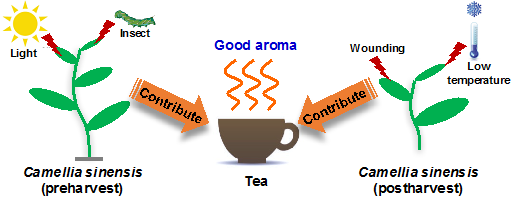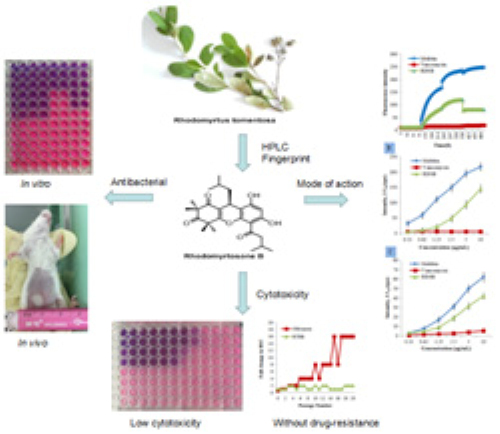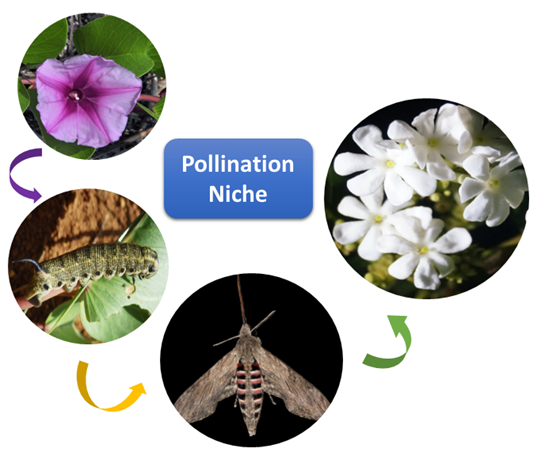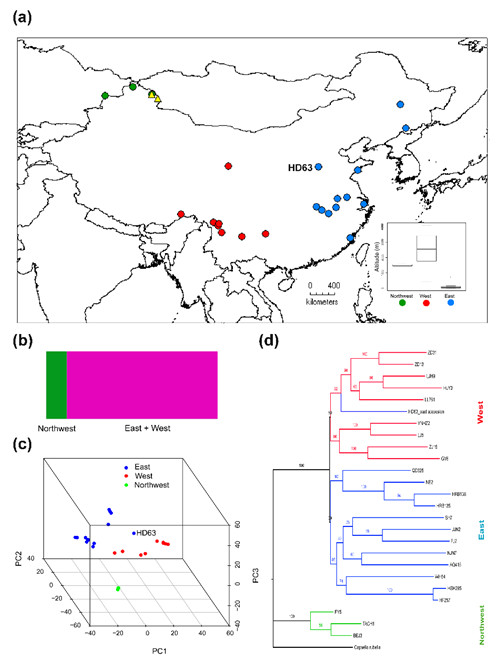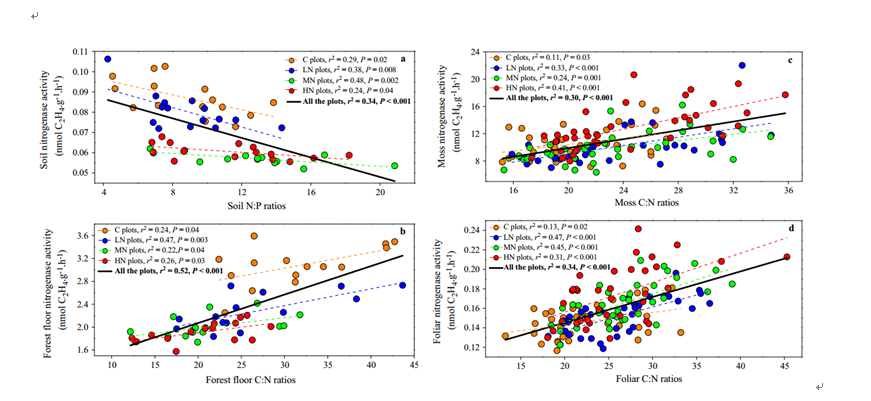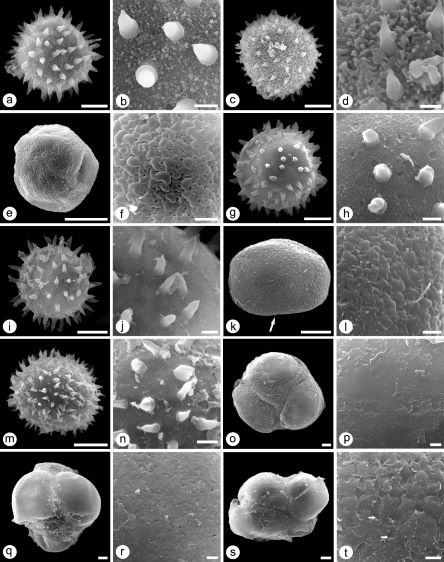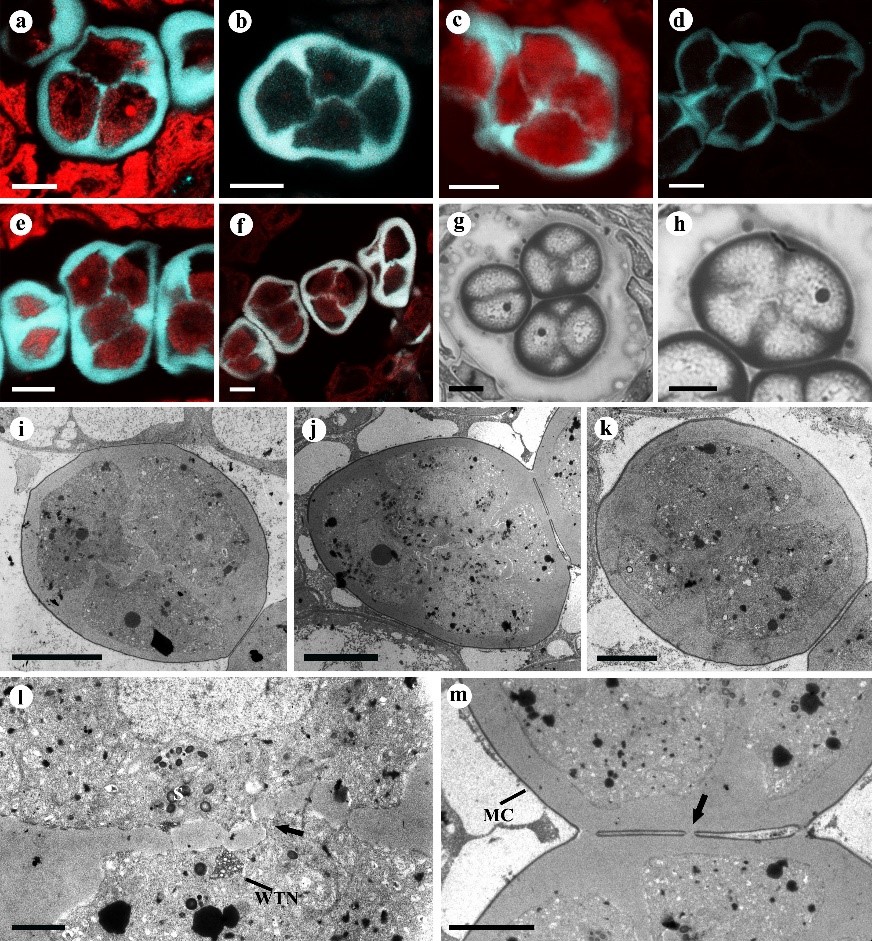News
-
2018-10-19Understanding the biosyntheses and stress response mechanisms of aroma compounds in tea (Camellia sinensis) to safely and effectively improve tea aromaRecently , tea research group of the South China Botanical Garden .Chinese Academy of Sciences ( PI : Prof . Ziyin Yang ) published a review entitled “ Understanding the biosyntheses and stress response mechanisms of aroma compounds in tea ( Camellia sinensis ) to safely and effectively improve tea aroma ” in Critical Reviews in Food Science a... Recently, tea research group of the South China Botanical Garden, Chinese Academy of Sciences (PI: Prof. Ziyin Yang) published a review entitled “Understanding the biosyntheses and stress response mechanisms of aroma compounds in tea (Camellia sinensis) to safely and effectively improve tea aroma” in Critical Reviews in Food Science and Nutrit...Read More
-
2018-10-15New progress in medicinal chemistry of natural products against drug-resistant bacteriaRhodomyrtus tomentosa ( Aiton ) Hassk . , also knownd as Rose myrtle , is distributed in the hilly areas of Taiwan , Fujian , Guangdong , Guangxi , and Lingnan region .Liyun Zhao , Ph . D . student of the Natural Products Chemical Biology Research Group of South China Botanical Garden , Chinese Academy of Sciences , under the guidance of Prof . ... Rhodomyrtus tomentosa (Aiton) Hassk., also knownd as Rose myrtle, is distributed in the hilly areas of Taiwan, Fujian, Guangdong, Guangxi, and Lingnan region. R. tomentosa is a medicinal and ornamental plant, and its sweet fruit is edible.Read More
Liyun Zhao, Ph.D. student of the Natural Products Chemical Biology Research Group of South China Botani... -
2018-10-09To keep pace with the “neighbor”: Pollination niche availability facilitates colonization of Guettarda speciosa with heteromorphic self-incompatibility on oceanic islandsGuettarda speciosa is a dominant woody plant on Xisha Islands , widely distributing on tropical and subtropical oceanic islands .Self-pollinated plants get pollination niche from themselves , and wind pollinated plants get pollination niche from wind , and animal pollinated plants get from pollinator .How to prove this hypothesis ? Similarly to ... Guettarda speciosa is a dominant woody plant on Xisha Islands, widely distributing on tropical and subtropical oceanic islands. As a typical island plant, it is a favorable species to study evolutional ecology questions relating to plants long distance dispersal. According our research data on Xisha Island, G. speciosa is an obligate out breedin...Read More
-
2018-09-29Homeologue-specific expression divergence in the recently formed tetraploid Capsella bursa-pastoris (Brassicaceae)Following allopolyploid formation , extensive genome evolution occurs , with the eventual loss of many homeologous gene copies .Despite the lack of evident population structure , Asian populations experience highly divergent environmental conditions .Orientalis accessions are included in ( a ) , but excluded in ( b ) . ( c ) PCA on total express... Following allopolyploid formation, extensive genome evolution occurs, with the eventual loss of many homeologous gene copies. Although this process of diploidization has occurred many times independently, the evolutionary forces determining the probability and rate of gene loss remain poorly understood. Capsella bursa-pastoris is a recently deri...Read More
-
2018-09-11Stoichiometry controls asymbiotic nitrogen fixation in a nitrogen-saturated forestLowland tropical forests with chronic nitrogen ( N ) deposition and/or abundant N-fixing organisms are commonly rich in N relative to other nutrients .The tropical N richness introduces a paradoxical relationship in which many tropical forests sustain high rates of asymbiotic N fixation despite the soil N richness and the higher energy cost of N... Lowland tropical forests with chronic nitrogen (N) deposition and/or abundant N-fixing organisms are commonly rich in N relative to other nutrients. The tropical N richness introduces a paradoxical relationship in which many tropical forests sustain high rates of asymbiotic N fixation despite the soil N richness and the higher energy cost of N f...Read More
-
2018-08-29Research Progress on Annonaceae Pollen MorphologyThe pantropical flowering plant family Annonaceae comprises c . 108 genera and c . 2300 species of trees , shrubs and lianas , and the largest number of species occurs in tropical Asia .Followed by tropical Americaand Africa . Being the largest family in the early-divergent Magnoliales , Annonaceae are noteworthy for having the greatest diversit... The pantropical flowering plant family Annonaceae comprises c. 108 genera and c. 2300 species of trees, shrubs and lianas, and the largest number of species occurs in tropical Asia, followed by tropical Americaand Africa. Being the largest family in the early-divergent Magnoliales, Annonaceae are noteworthy for having the greatest diversity in t...Read More
-
2018-08-27Formation pattern in five types of pollen tetrad in Pseuduvaria trimera (Annonaceae)Pollen is a male germ cell carrying genetic information , and its morphology has strong genetic conservatism .The nucleus location of the microspores together with cytokinesis determine the number and the spatial arrangement of callose plates , and further have an effect on the tetrad types .Our observations of the development of tetrads provide... Pollen is a male germ cell carrying genetic information, and its morphology has strong genetic conservatism. In angiosperms, in addition to the single pollen, there aredyads, tetrads, octads and polyads. In entomophilous plants, polyads ensures that pollinators can carry a larger amount of pollen at one time, increasing the fertilization rate wi...Read More
-
2018-08-24Mid-term Assessment Meeting on the Project “Development of New Technologies for Post-harvest Quality and Quality Control of Large-scale and Characteristic Fruits and Vegetables in South China”South China Botanical Garden .Chinese Academy of Sciences organized the mid-term assessment meeting of the project “ Development of New Technologies for Post-harvest Quality and Quality Control of Large-scale and Characteristic Fruits and Vegetables in South China ( Project Number : 2016YFD0400904 ) ” supported by the National Key R&D Program ...Read More
South China Botanical Garden, Chinese Academy of Sciences organized the mid-term assessment meeting of the project “Development of New Technologies for Post-harvest Quality and Quality Control of Large-scale and Characteristic Fruits and Vegetables in South China (Project Number: 2016YFD0400904)” supported by the National Key R&D Program ...
